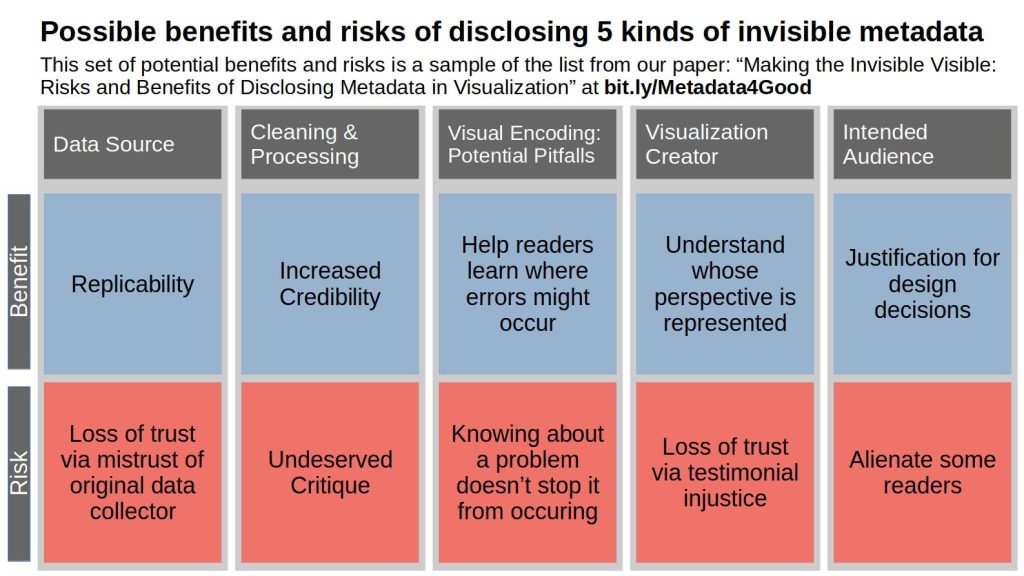Making the Invisible Visible

Led by: Alyxander Burns Making the Invisible Visible: Risks and Benefits of Disclosing Metadata in Visualization
Making the Invisible Visible: Risks and Benefits of Disclosing Metadata in Visualization![]() Talk
Talk
Accompanying a data visualization with metadata may benefit readers by facilitating content understanding, strengthening trust, and providing accountability. However, providing this kind of information may also have negative, unintended consequences, such as biasing readers’ interpretations, a loss of trust as a result of too much transparency, and the possibility of opening visualization creators with minoritized identities up to undeserved critique. To help future visualization researchers and practitioners decide what kinds of metadata to include, we discuss some of the potential benefits and risks of disclosing five kinds of metadata: metadata about the source of the underlying data; the cleaning and processing conducted; the marks, channels, and other design elements used; the people who directly created the visualization; and the people for whom the visualization was created. We conclude by proposing a few open research questions related to how to communicate metadata about visualizations.